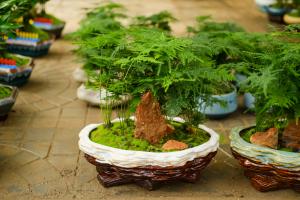Introduction
Cell division is a vital process that occurs in both plant and animal cells. It allows for growth, repair, and reproduction of these organisms. However, there are some differences in the way cell division occurs in animal and plant cells. In this article, we will discuss how cell division differs between these two types of cells.
Animal Cell Division
Animal cell division, also known as mitosis, has four distinctive phases: prophase, metaphase, anaphase, and telophase. During prophase, the chromosomes in the nucleus condense and become visible. The nuclear envelope also disintegrates. In metaphase, the chromosomes line up in the center of the cell. During anaphase, the sister chromatids of each chromosome separate and are pulled to opposite ends of the cell. Finally, during telophase, the nuclear envelope reforms and the chromosomes decondense.
Plant Cell Division
Plant cell division, on the other hand, is slightly different from animal cell division. This process is known as mitosis as well as cytokinesis. During cytokinesis, the cytoplasm is divided into two daughter cells. The dividing cell plate starts from the center of the cell and extends towards the cell's periphery, dividing the cytoplasm into two equal halves. The cell plate eventually fuses with the cell wall, creating two new cells. This process is different from animal cell division as animal cells do not have a cell wall.
Meiosis
Another form of cell division in animals and plants is meiosis. Unlike mitosis, meiosis produces haploid cells that are used during sexual reproduction. During meiosis, the chromosomes in the cell are replicated, then divided into two separate cell divisions. The first division separates the pairs of homologous chromosomes, while the second division separates the chromatids of each chromosome. This process results in the production of four genetically diverse haploid cells.
Conclusion
In conclusion, while the fundamental process of cell division is the same in animal and plant cells, there are some distinct differences between the two types of cells. Plant cells undergo cytokinesis to divide the cytoplasm, while animal cells do not have a cell wall and rely on the formation of a cleavage furrow to divide. Additionally, both animal and plant cells use meiosis to produce haploid cells for sexual reproduction. Understanding the differences between animal and plant cell division is crucial for scientific research and may help to develop new treatments for diseases caused by abnormal cell division.

 how many times do yo...
how many times do yo... how many planted tre...
how many planted tre... how many pine trees ...
how many pine trees ... how many pecan trees...
how many pecan trees... how many plants comp...
how many plants comp... how many plants can ...
how many plants can ... how many plants and ...
how many plants and ... how many pepper plan...
how many pepper plan...




























